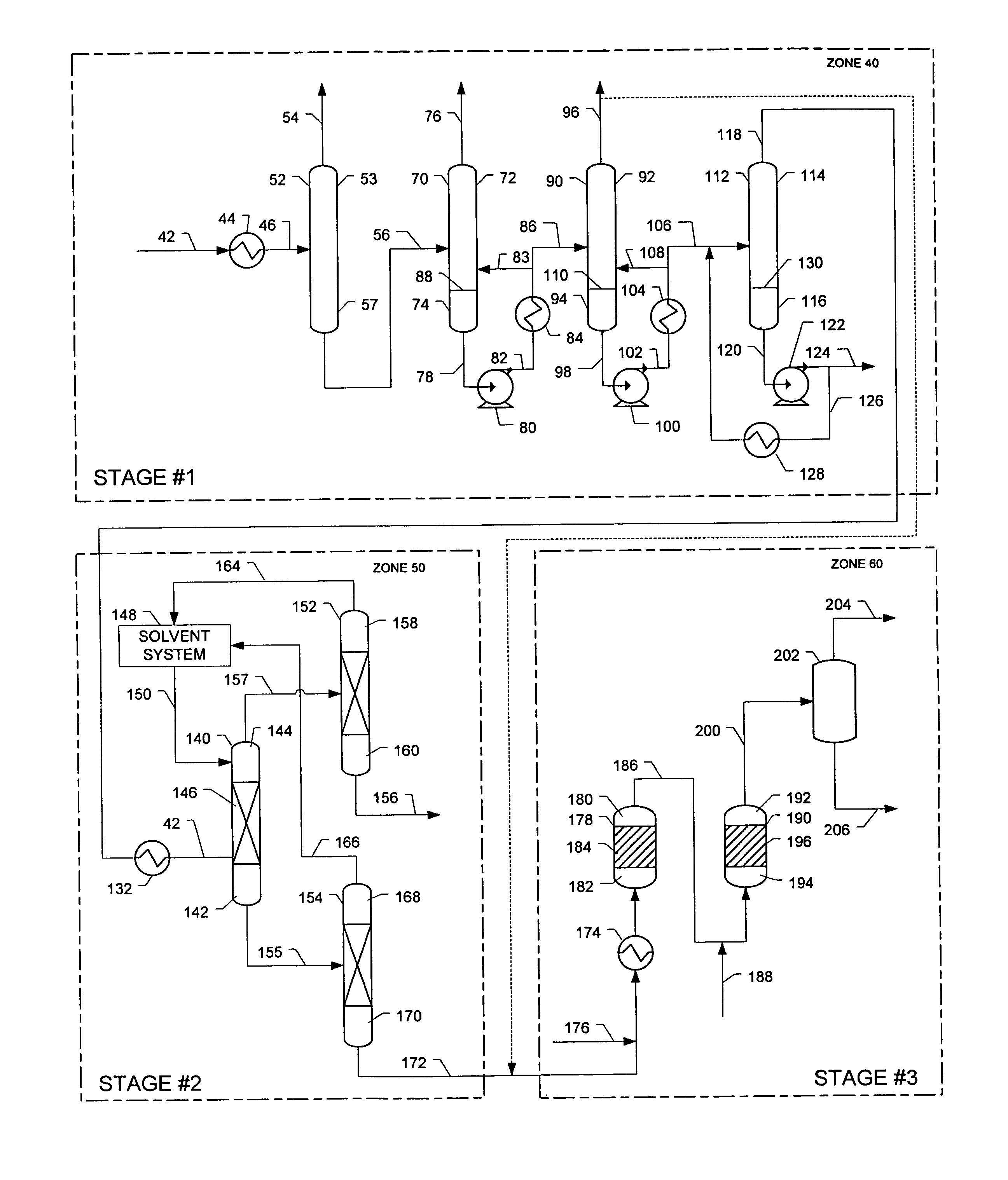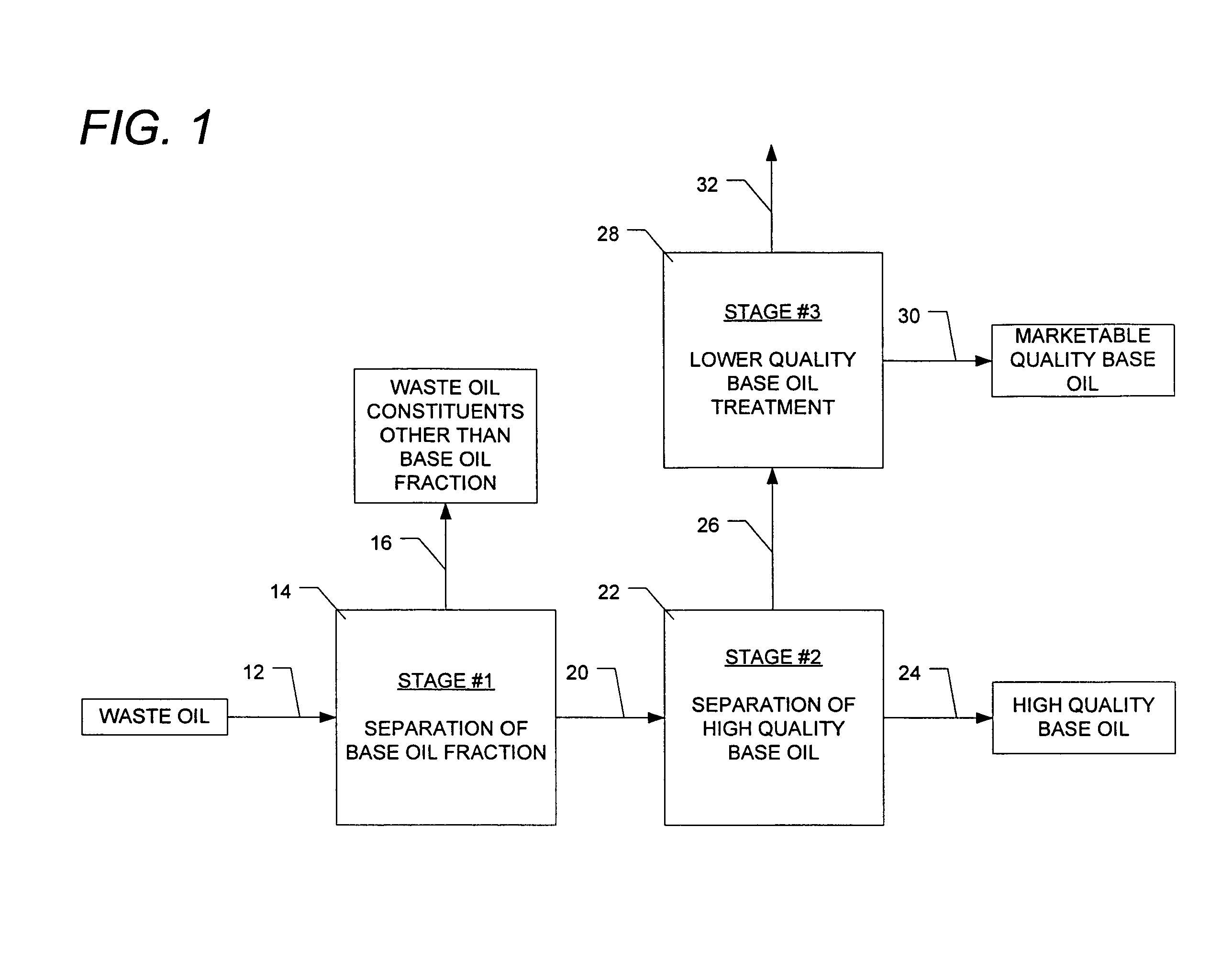Method for producing base lubricating oil from waste oil
a technology of waste oil and base oil, which is applied in the direction of hydrocarbon distillation control/regulation, lubricating oil distillation, vacuum distillation separation, etc., can solve the problems of unsuitable oils for use in their intended services, reduce the desired performance of base oils and finished lubricating oils, etc., and achieve high yield and high quality
- Summary
- Abstract
- Description
- Claims
- Application Information
AI Technical Summary
Benefits of technology
Problems solved by technology
Method used
Image
Examples
Embodiment Construction
[0027]In FIG. 1, a generalized embodiment of the present invention is shown. In the embodiment shown, a waste oil stream 12 is charged to a base oil separation zone 14 where a portion of the base oil constituents (base oil fraction), line 20, is separated from the other physical contaminants, line 16, in the waste oil. In actual practice, the various physical contaminants are typically removed from the base oil fraction in such a way as to produce more than one stream but for simplicity are shown herein to be separated collectively and recovered through line 16 and may include low molecular weight materials such as light hydrocarbons, water, glycols and the like typically having a boiling range generally below about 500° F., although it may be desirable to include all materials below 650° F., and high molecular weight materials and materials with low volatility including, particulates, polymers, salts and the like typically having a boiling point greater than about 1050° F. The base...
PUM
| Property | Measurement | Unit |
|---|---|---|
| boiling point | aaaaa | aaaaa |
| boiling point | aaaaa | aaaaa |
| boiling point | aaaaa | aaaaa |
Abstract
Description
Claims
Application Information
 Login to View More
Login to View More - R&D
- Intellectual Property
- Life Sciences
- Materials
- Tech Scout
- Unparalleled Data Quality
- Higher Quality Content
- 60% Fewer Hallucinations
Browse by: Latest US Patents, China's latest patents, Technical Efficacy Thesaurus, Application Domain, Technology Topic, Popular Technical Reports.
© 2025 PatSnap. All rights reserved.Legal|Privacy policy|Modern Slavery Act Transparency Statement|Sitemap|About US| Contact US: help@patsnap.com



